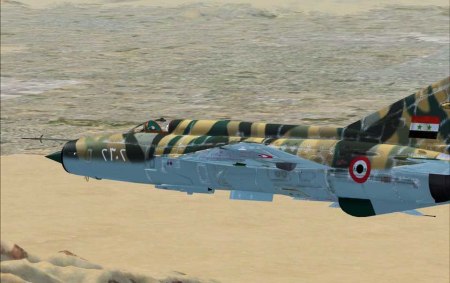Abdullah Suleiman Ali As-Safir
The unexpected end and thunderous fall of the Tabaqa Military Airport in Raqqa to IS (Islamic State) has reshuffled the cards on the ground and opened the eastern and central parts of Syria to endless, dangerous possibilities. Meanwhile, the Christian majority city of Mhardeh, in the countryside of Hama, was under the fiercest offensives by Jabhat al-Nusra several days ago, amid fears that the scenario of the capture of Maaloula could be repeated.
Regardless of how you describe what happened at the military airport, whether it was to retreat and regroup the Syrian troops outside the airport, or a withdrawal and defeat, the inevitable truth is that Raqqa province as a whole has become devoid of any presence of the Syrian army, which is a precedent since the start of the Syrian war three and a half years ago. This gives IS greater freedom of movement and mobility and allows it to secure supply routes between Mosul and the city of Raqqa.
The fall of the military airport is expected to result in dangerous repercussions on several areas, stretching from the countryside of Hama — which is, according to estimations, probably the next target for IS — through the Deir ez-Zor military airport — which is severely endangered following the loss of the 24th air defense brigade — to some Iraqi areas where at the moment fierce battles are taking place. IS may now be able to bring additional fighters to contested areas, after it managed to get rid of the threats posed by the aircraft of the Tabaqa Military Airport. IS has also inflicted great damage to Syrian fighter jets.
The Tabaqa Military Airport fell on August 24 to IS, which launched its fourth attack in six days. Although the airport was able to effectively counter major attacks, the ongoing and unusual heavy attacks in a short period of time pushed the military leadership to consider a decision to evacuate the airport and withdraw all of the troops, aircraft and military equipment. The takeover by Syrian army units of Oujail village, which is close to the airport toward the south on August 21 was an important indicator of the army’s quest to secure a safe route that would enable troops at the airport to pass through toward Athrey in the countryside of Hama, when the decision to evacuate the airport was taken.
Contrary to what IS posted on its webpage, the fourth attack began after the group’s radical leadership revealed that the Syrian army has already begun evacuating the airport. Thus, the group launched the attack at dawn on Sunday and took advantage of the small number of troops left after the withdrawal of the others. In addition IS took advantage of the situation, where only light weaponry was available to regime forces as artillery and tanks had already been withdrawn and warplanes and helicopters were preoccupied with covering the line of withdrawal toward Athreya. It was the first time that IS fighters managed to approach and surround the airport, to enter and control it completely.
The attack on the Tabaqa Military Airport was led by the Tajik military leader in Raqqa, also known as the Tajik emir. The attack was also co-led by Amer al-Rafdan, the IS “governor” in Deir ez-Zor. The general supervisor of this battle, whose plan was translated into three languages (as the majority of the fighters are non-Arabs) is the IS general military commander Omar al-Chichani.
In the meantime, IS fighters withdrew from the northern countryside of Homs on the command of IS leader Abu Bakr al-Baghdadi, according to journalists close to him, and some of the forces moved to Raqqa while the rest moved to the eastern countryside of Homs.
This sudden move comes at a time when Jabhat al-Nusra launched a broad campaign to deter dissidents in northern Homs, while yesterday was expected to be the date on which Jabhat al-Nusra and IS agreed to conduct a public debate to discuss the religious differences in the region.
Targeting the Christians in Mhardeh
Jabhat al-Nusra launched a major offensive on the city of Mhardeh in the countryside of Hama on August 21 in order to storm and control it. The clashes and battles are ongoing in the vicinity of the checkpoints of the Syrian army, which are deployed around the city to protect it.
Although nearly 15 factions take part in the battles, differences emerged between Jabhat al-Nusra and the FSA (Free Syrian Army) brigades in terms of their tendencies. The latter does not hide their fears and concerns of the repercussions of storming the Christian majority city of Mhardeh and the resulting regional and international pressure, while Jabhat al-Nusra insists on breaking into the city. For this purpose, it brought additional reinforcements from Aleppo on August 24, after it sensed that the FSA brigades are slacking in the fighting, according to a source close to Jabhat al-Nusra.
What confirms that Jabhat al-Nusra is serious in its decision to storm Mhardeh is the news that that the group leader Abu Mohammed al-Joulani has moved to the countryside of Hama, in news leaked by journalists close to the group, where Joulani spoke to nearly 1,500 fighters before they headed to battle in Mhardeh. The general military commander of Jabhat al-Nusra, Abou Hammam as-Suri, and Saudi sheikh Abdullah al-Muhsini were also present during the gathering, to lift the moral of the fighters. The journalists who leaked the news said Joulani will remain in the countryside of Hama until the outcome of the battle in Mhardeh was clear. This was because it is of strategic importance for Jabhat al-Nusra as it connects the countryside of Hama to the countryside of Idlib, which Jabhat al-Nusra desires to make its new stronghold after it lost the eastern parts of Syria.



Keine Kommentare:
Kommentar veröffentlichen